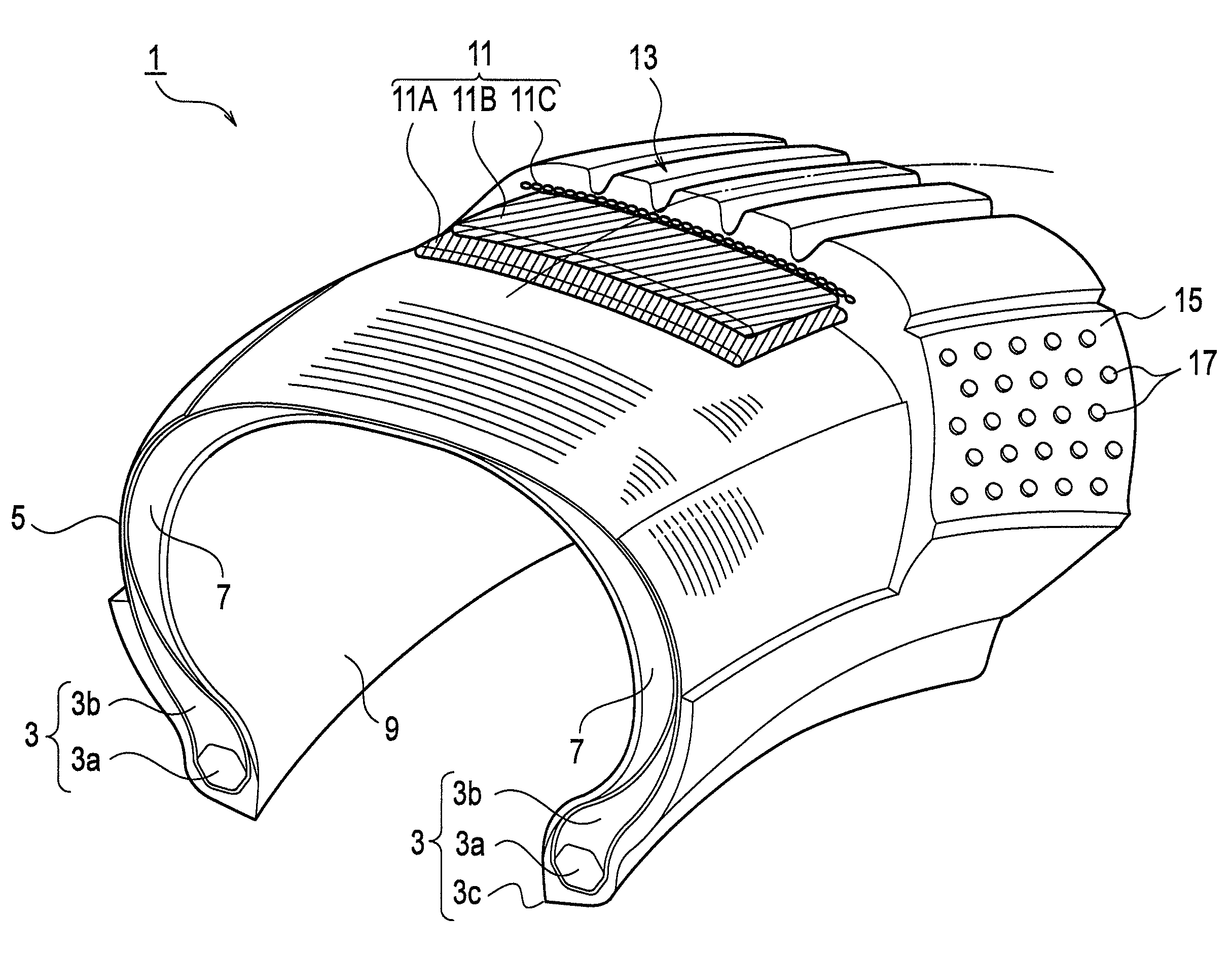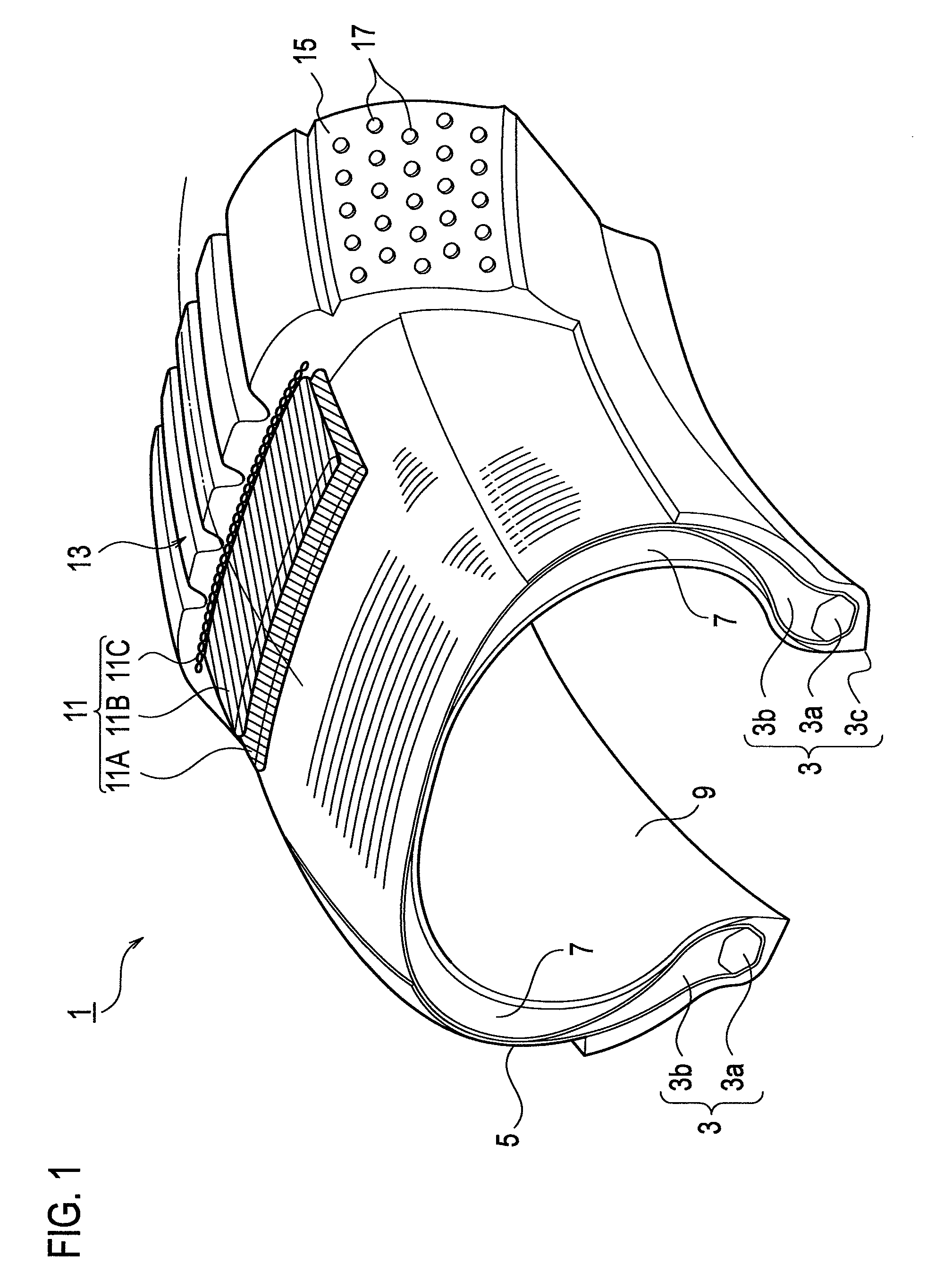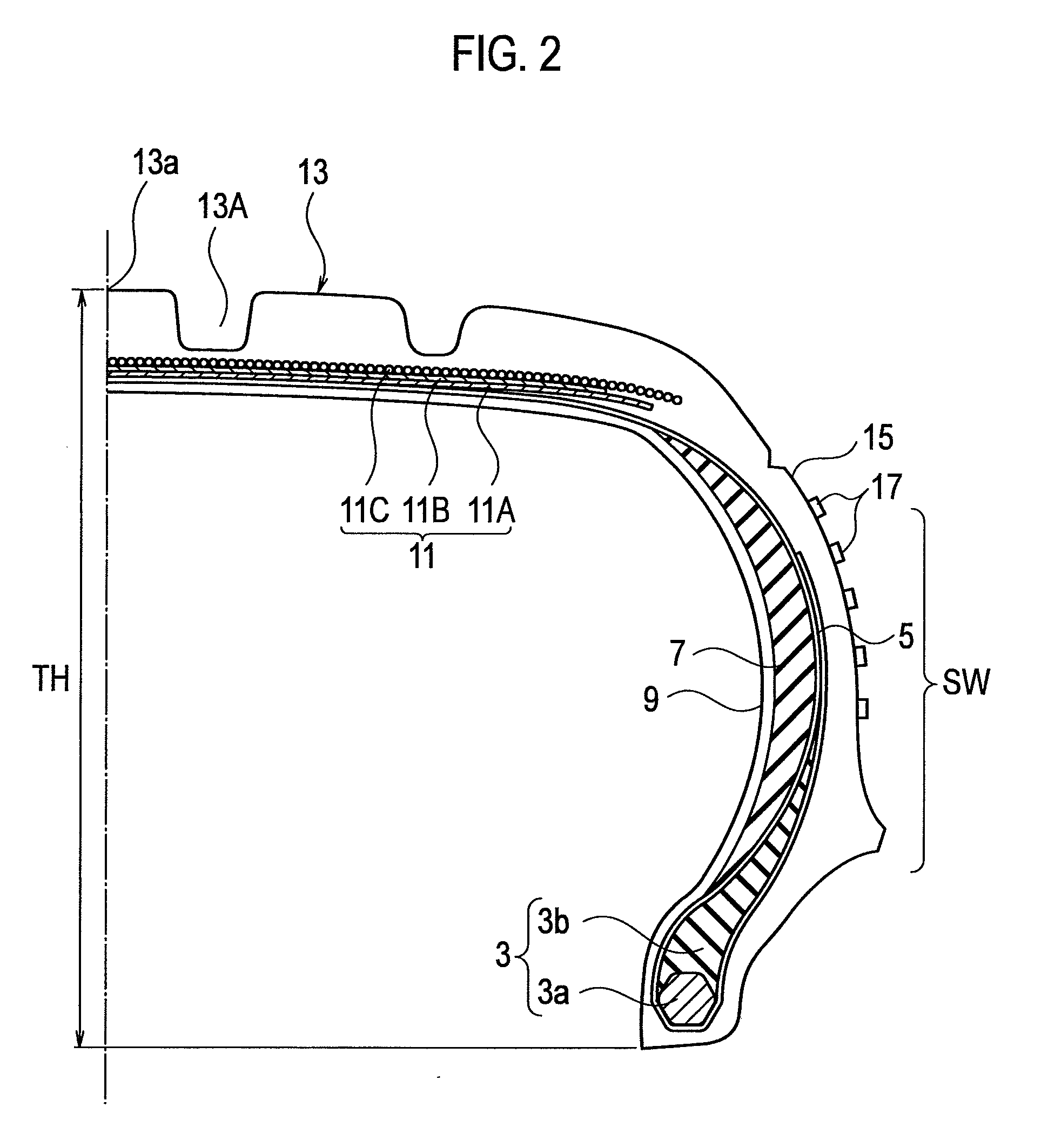Pneumatic tire
a pneumatic tire and tire temperature technology, applied in the field of pneumatic tires, can solve the problems of increasing the temperature of the pneumatic tire, degrading the general driving performance, increasing the tire weight, etc., and achieves the effect of reducing the heat accumulation of the protruding 17 and extending the service li
- Summary
- Abstract
- Description
- Claims
- Application Information
AI Technical Summary
Benefits of technology
Problems solved by technology
Method used
Image
Examples
first embodiment
Configuration of Pneumatic Tire
[0103]First, with reference to FIGS. 1 and 2, a description will be given of the configuration of a pneumatic tire according to a first embodiment. FIG. 1 is a partially-exploded perspective view of the pneumatic tire according to the first embodiment. FIG. 2 is a cross-sectional view of the pneumatic tire according to the first embodiment, taken in a tread width direction. Note that the pneumatic tire in this embodiment is a passenger-car radial tire (PCR).
[0104]As FIGS. 1 and 2 show, a pneumatic tire 1 has a pair of bead parts 3. Each of the bead parts 3 includes at least a bead core 3a, a bead filler 3b, and a bead toe 3c. The pneumatic tire 1 also has a carcass layer 5 in a toroid shape. Specifically, the carcass layer 5 bends around each of the bead cores 3a from the inner side in the tread width direction to the outer side in the tread width direction, and then extends by each of sidewall parts SW.
[0105]Sidewall reinforcing layers 7 are formed in...
examples according to first embodiment
Experiments on Arrangement Density of Protrusions
[0152]The protrusions are each made of rubber and mainly shaped as a cylinder or a square pole. The protrusions prepared had the protrusion radial-direction length (L) of various sizes in the range of 0.3 mm to 15 mm. The following experimental method was employed. Specifically, the aforementioned protrusions were arranged on a flat heater emitting a constant amount of heat, and the surface thereof was supplied with air by a blower. A heat transfer coefficient was calculated from the surface temperature and the atmospheric temperature acquired at this time. In this way, the characteristics chart shown in FIG. 12 was obtained with the heat transfer coefficient of a flat plate having no protrusions being evaluated as 100.
[0153]The inventors have discovered that the heat transfer coefficient improves dramatically when the average arrangement density (ρ) of the protrusions 17 satisfies the relationship 1 / {50H(L+10H)}≦ρ≦1 / {H(L+H / 3)}. Speci...
second embodiment
[0177]Next, the configuration of a protrusion 17 according to a second embodiment will be described with reference to FIGS. 19 and 20. Note that the same parts as those of the pneumatic tire 1 according to the above-described first embodiment bear the same reference symbols, and different parts will mainly be described. Namely, points such as the configuration of the pneumatic tire 1 and the arrangement and arrangement density of the protrusions 17 are not repeatedly described. However, some points may be partly repeated.
[0178]FIG. 19 is a perspective view showing a protrusion according to the second embodiment. Part (a) of FIG. 20 is a top view showing the protrusion according to the second embodiment (a view seen in the arrow A of FIG. 19). Part (b) of FIG. 20 is a cross-sectional view showing the protrusion according to the second embodiment seen in the tire radial direction (a B-B cross-sectional view of FIG. 19). Part (c) of FIG. 20 is a front view showing the protrusion accord...
PUM
 Login to View More
Login to View More Abstract
Description
Claims
Application Information
 Login to View More
Login to View More - R&D
- Intellectual Property
- Life Sciences
- Materials
- Tech Scout
- Unparalleled Data Quality
- Higher Quality Content
- 60% Fewer Hallucinations
Browse by: Latest US Patents, China's latest patents, Technical Efficacy Thesaurus, Application Domain, Technology Topic, Popular Technical Reports.
© 2025 PatSnap. All rights reserved.Legal|Privacy policy|Modern Slavery Act Transparency Statement|Sitemap|About US| Contact US: help@patsnap.com



